- Lecture and drafting of a series of volumes of Recommendations for Maritime Works, ROM (0.0, 1.0, 1.1).
- Gestión del riesgo asociado a la erosión e inundación en un escenario de cambio climático y la toma de decisiones sobre concesiones en el dominio público marítimo-terrestre.
- Trabajos estudio de inundación y erosión en zonas costeras de Andalucía en un escenario de cambio climático.
- Wave agitation and resonance in the inner basin of Malaga’s harbor.
- 3D experiments of the exterior breakwater of the enlargement of Gijón’s harbor.
- Assessment of the impact of floating docks in the morphodyncamics of the Guadalete river mouth.
- Wave agitation and resonance in the inner basin of Ceuta’s harbor.
- Impact of the dispersion of a waste water spill in a highly protected area (Inner Bay of Cadiz).
- Evolution of Valdevaqueros’ Dune.
- New container terminal in Cádiz’ harbor – 3D experiments of the S-shaped breakwater.
- Generation and evolution of bed forms in the shoaling zone of reflective beaches.
- Laboratory experiments of the esplanade of Aboño at Gijón’s harbor.
- Study of wind loads on photovoltaic panels.
- Laboratory experiments for the analysis of the stability of the filling at the south part of the exterior breakwater of Almeria’s harbor.
- Design, monitoring and modeling of the pilot experiment of the restoration of a tidal creek in Guadalete river saltmarsh.
- UNDIGEN: Study of Ocean Wave Energy Extraction.
- Study of Coastal Floods and Erosion Hazards under a Climate Change Scenario in Andalusia, Spain
Research and Innovation Projects
Main Technical Assistance & R+D Contracts
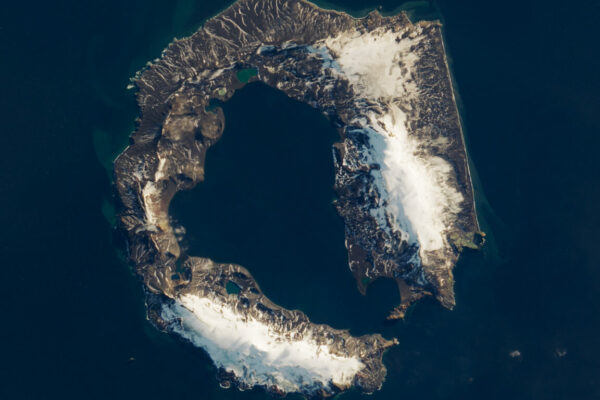
Determination of amphidromic points in semi-enclosed ocean basins with high stratification (DARMA)
Tides play a fundamental role in oceanic, coastal and estuarine hydro-morphodynamics. Their mixing intensity is fundamental to the generation of large-scale ocean circulation, they partly control morphological changes in the coastline, and they transport suspended matter with important consequences on marine ecosystems. This project is a project looking at the influence of stratification on the formation of amphidromic points in real semi-enclosed ocean basins.
Study of amphidromic points in semi-enclosed ocean basins by a two-layer model (ANFICAPA)
The main objective of project is to increase the understanding of tidal propagation in the ocean and coastal seas. Specifically, this project aims to evaluate with an idealized mathematical model the conditions of formation of amphidromic systems, both barotropic and internal, induced by the tide in situations where the water column presents a high stratification, i.e., when establishing a two-layer flow is possible.

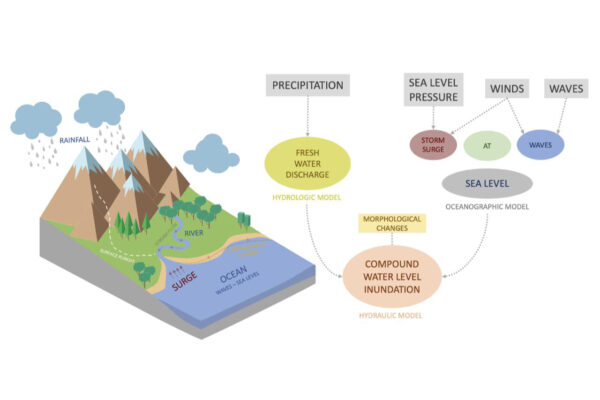
Multi-scale hybrid short-term predictions and climage change projections system for compound flooding (MyFlood)
Coastal flooding is among the most dangerous and costly natural hazards. There are several reasons why the consequences of this hazard are so catastrophic. On the one hand, flooding events are often due to the interaction of multivariate drivers (compound events), such as precipitation, river discharge, tides, storm surges and waves, which are often caused by a common meteorological forcing and exacerbate the effects. On the other hand, the risk to human life is intensified by the fact that more than 50% of the population is concentrated in the coastal zone. Regarding climate change, flooding impact is greatly affected, firstly, because average sea-level rise directly increases the risk; secondly, the flooding drivers are also altered, e.g., the increase in the frequency and the intensification of extreme precipitation events. Besides, rapid erosion due to extreme storms or long-term erosion due to climate change trends, modifies the coastline altering compound flooding consequences making it necessary to incorporate morphological changes in the modelling process. Therefore, the purpose of this project is to advance on the estimation of compound flooding at two spatial scales: regional and local, and two different time periods: short-term forecast and long-term projections of climate change, trying to open new climate services related with this impact and include socio-economic consequences to assess risk.
Prospective Evaluation at Climatic Scales of the Morpho-hydrodynamic Status of Estuarine Systems: Opportunities for Sustainability (EPICOS)
EPICOS project proposes a prospective study -on a time scale of decades- of eco-morpho-hydrodynamic evolutionary trends of estuaries. Management strategies will be proposed within the (already restrictive) legal-environmental framework. These strategies will be effective, creative and sustainable and will be aimed at improving the environmental status of the estuarine system, either by taking advantage of the opportunities provided by natural changes, or by low-invasive actions that mitigate the predicted impacts and help to improve the adaptation and resilience of the estuary. This study will be carried out in the Guadalquivir estuary, as a characteristic estuary of high socio-economic relevance and ecological potential, which has been identified as one of the most vulnerable estuaries of the Iberian Peninsula to global change. Should the degree of anthropization of the Guadalquivir increases, it could reach a collapse that would be difficult to reverse. EPICOS project faces this challenge at a time when the window of opportunity is open and the time to act is reduced.
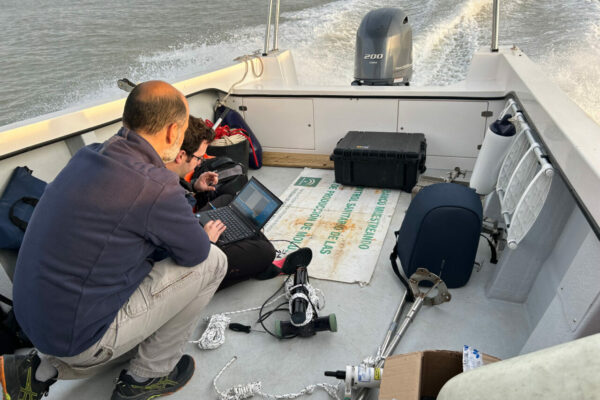

Diagnóstico preliminar del equilibrio sedimentario en la costa continental europea (AUDITOR)
Coastal erosion threatens the planet’s shores, and human activity plays a crucial role in disrupting sediment transport along the coast. This disruption occurs both from the land, by obstructing or extracting aggregates from rivers, and from the sea, by limiting the longshore flow with infrastructures. The project “Preliminary Diagnosis of Sedimentary Balance on the European Continental Coast” (AUDITOR) aims to conduct a preliminary diagnosis of the sedimentary balance on the European continental coast. The study leverages the most current bathymetry and relies on the characteristics of the local seabed sediment to evaluate the average and most energetic potential longitudinal and cross-shore transport by sections along the coastline. The diagnosis of these results broadly characterizes the sedimentary dynamics and allows for the identification of regions with sediment deficits.
Generation of Hydrogen from Wave Energy. Sustainable Management and Impact on the Carbon Footprint (GORGONA)
Marine energy is one of the levers for energy transformation in the medium and long term at global level, as well as an industrial, economic and social opportunity. In addition, green hydrogen is considered as the key sustainable solution for the decarbonization of the economy. Green hydrogen is obtained from renewable electricity using water through electrolysis process. Hydrogen is being considered as a future alternative for power transformation and storage. Europe is currently developing roadmaps to achieve a first target of 55% emissions reduction by 2030 and decarbonization of the continent by 2050. This project focuses on the study of wave energy transformation, green hydrogen generation for energy management and the impacts on renewability and sustainability from a thermo-economic standpoint.
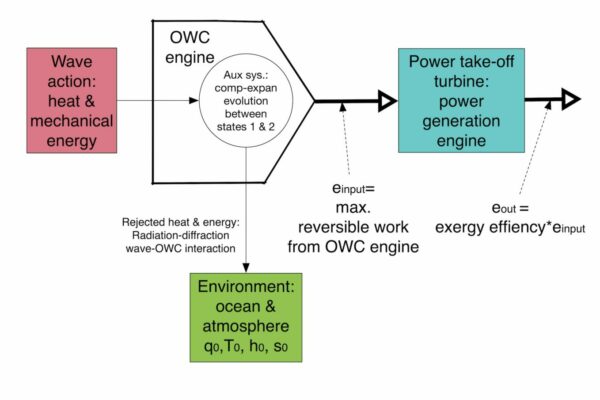
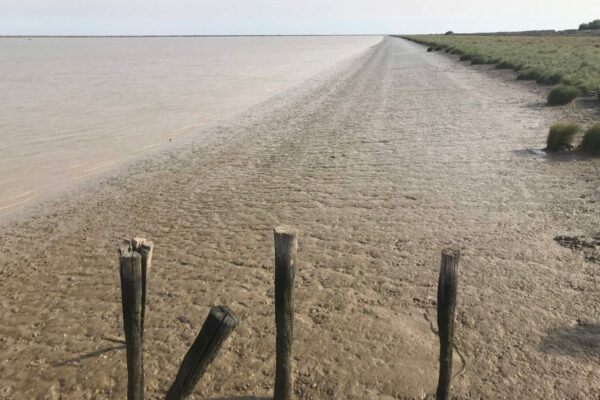
Modeling the contribution of intertidal microphytobenthic biofilms to primary production in the Guadalquivir River Estuary (MUDDY)
Estuaries are ecosystems with high ecological, biological and socio-economic value. In many estuaries the contribution of sediment-attached biomass (mostly benthic microalgae or microphytobenthos, MPB) to primary production is relatively higher than that of free phytoplankton production. The overall objective of MUDDY project is to systematically and reliably estimate the contribution of MPB biofilms to the primary production to the Guadalquivir estuary. The aim is to quantify the surface extent of these biofilms in this estuary. These biofilms, in general, cover variable extensions along the margins. In order to understand the variability of the MPB it is necessary to study its physico-chemical behaviour under a series of physical forcings common in the estuary: river flow, density-driven flow, tides, availability of light in the water column as a function of turbidity and extreme random events such as wind or discharges and punctual contributions of the rivers to the estuary.
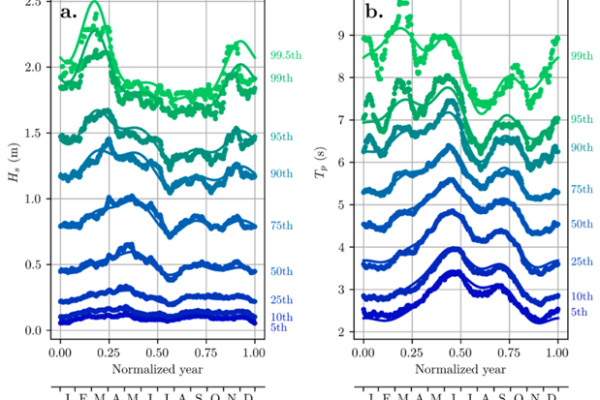
El cambio climático en el oleaje del Mediterráneo (CCOM)
The demand for data and spatiotemporal series has led to the exponential growth of databases dedicated to recording climatic information, both atmospheric and maritime. This development has facilitated access to global, regional, and local databases at different spatial and temporal scales. Furthermore, in the past decade, the use of probabilistic models to simulate future conditions in all areas and sectors of society has become widespread. The information obtained from these applications allows for objective decision-making from a multicriteria perspective, considering the relevant elements without limitations. With this purpose in mind, the Recommendations for the Design and Operation of Maritime Works (ROM program) have adopted this approach in the coastal and port environment in their latest revisions. The objective of the project “Climate Change in Mediterranean Wave Conditions” (CCOM) has been to define a methodology to simulate the wave conditions that will occur in the Mediterranean under different climate change scenarios for the period 2018-2100 based on a stochastic approach.
Dimensional analysis and experimental development for maritime works design following ROM1.1-18 (ROMpeOLAS)
This project represents an ambitious advance in the current state of knowledge and technological development by proposing a new design methodology of breakwaters, that incorporates the evolution of damage and repair strategies with cost analysis in the technical- economic design model of breakwaters. This development will be the basis for the final result of this project: the implementation of a methodology for the design, construction and maintenance of the main section of the breakwaters in each of its project phases that allows to optimize the total cost of the project and select the most efficient alternative, responding to the demands of the ROM1.1-18.
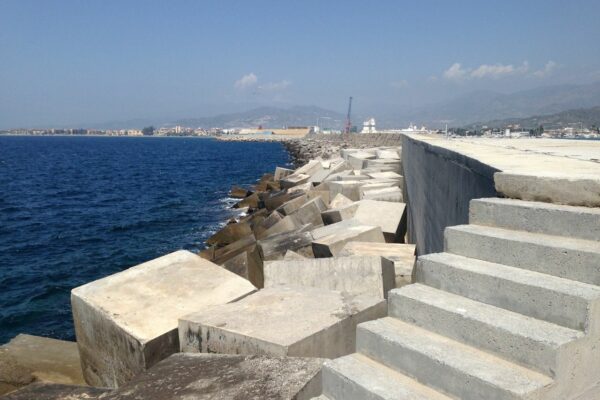
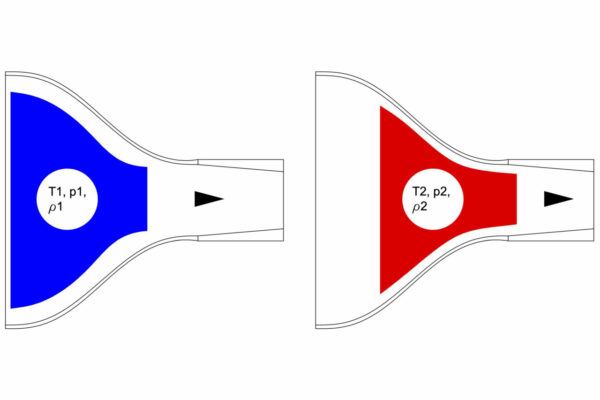
Renewable Wind-Wave Resource Adaptation to the Andalusian Coastal Climate Environment (ATTILA)
The main objective of the project is to study how to adapt the combined wind-wave energy exploitation to the energy resource available on the Andalusian coast. In particular, it seeks to achieve sustainable technological efficiency in an environment with a medium maritime climate, in which intermediate states, even those close to calm states, can be effectively exploited. This also has a direct impact on the economic requirements for setting up such an operation, making it more competitive and simpler to install, maintain, repair and, where necessary, dismantle. In order to achieve these objectives, it is proposed to carry out a theoretical/experimental study focused on the adaptation of the basic technological principles of wind and wave energy exploitation to the environmental and climatic conditions of the Andalusian coastline.
Environmental Impact of Renewable Energy Resources on the Coastal Areas and their Adaptation to Global Warming (AEROBATIC)
One of the proposed solutions to mitigate the effects of climate change in coastal areas is the installation of renewable energy systems (wave, wind) designed both for clean energy extraction and protection against coastal processes with increasing frequency and/or intensity. However, the suitability of those renewable solutions has to be carefully assessed. In fact, the equilibrium of coastal systems and the related environmental fluid dynamics can be influenced by external facts with different scales: on a large scale the climate change would be main agent; on a small scale, human interactions with the coast area might have great influence on the coastal processes.
The objective of this project is to build an integrated strategical approach to the effects of renewable energy technologies (waves, wind and combined) on the interface atmosphere-ocean, and the consequences for the coastal environmental fluid dynamics.
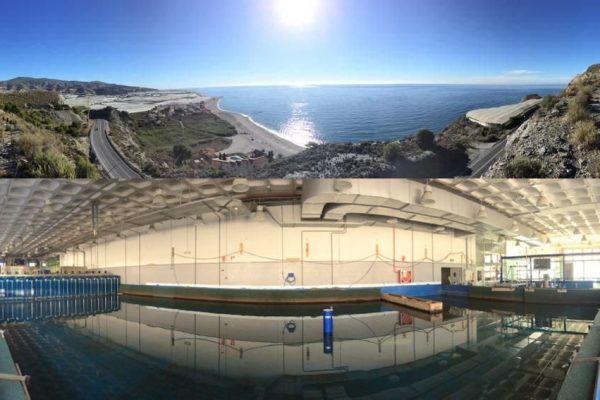
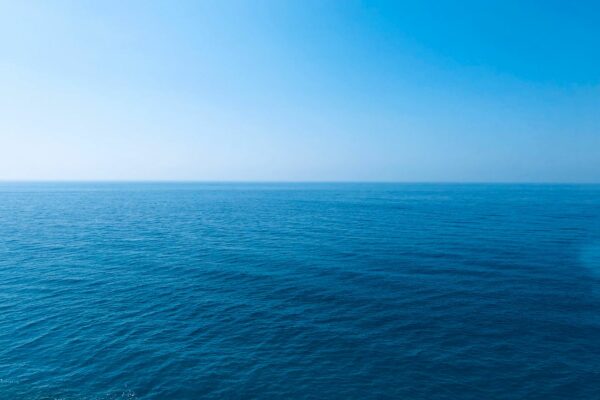
Laboratory testing and knowledge transfer for the development of sustainable strategies for marine energy harvesting (SUSME)
SUSME is a bi-regional cooperation Europe-Latin America focused in testing, improving and optimizing a group of technologies for marine energy harnessing. The main goal is to set the basis for increasing the scale of the devices towards their implementation in real sea conditions and prototype dimensions.
In the context of having efficient technologies, the analysis of the data derived from the tests in laboratory, will be used to design the components, subsystems, and connection to the network, in such a way that they will contribute to the reduction of the marketing gap, interest for the industry in terms of reducing maintenance and operating costs as well as the LCOE.
The mutual knowledge will be channeled to continue with the development of the technologies, as well as for future cooperation, since the results will lay the foundations to take advantage of the ocean resource in different regions.
Development of tools to prevent and manage geological risks at coastal areas against climate change (RISKCOAST)
The SUDOE coast is a territory highly vulnerable to climate change the effects. These environments have been widely modified from natural spaces to urban areas with a strong anthropic pressure. The increase in the frequency of extreme events induces geological hazards that significantly affect the economy of coastal regions and pose a threat to their inhabitants. RISKCOAST promotes innovation to face a range of threats: landslides, subsidence of the land due to the intense exploitation of aquifers during droughts, erosion and fluvial processes after torrential events along the river basins and delta regression. Coastal processes tend to be very complex by including all these systems and processes with cascading effects that are difficult to predict. RISKCOAST offers an integral vision of the risks that lurk the coast, considering the whole of the hydrological basin.
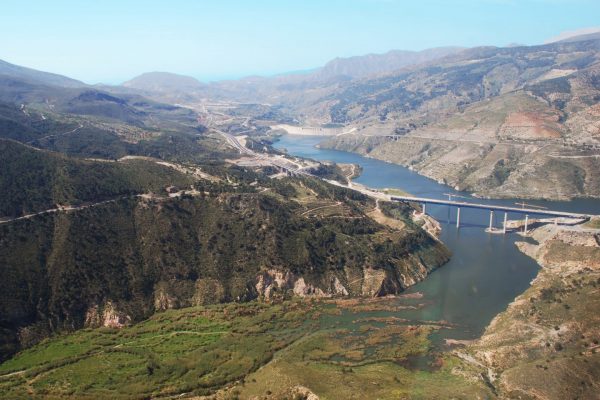
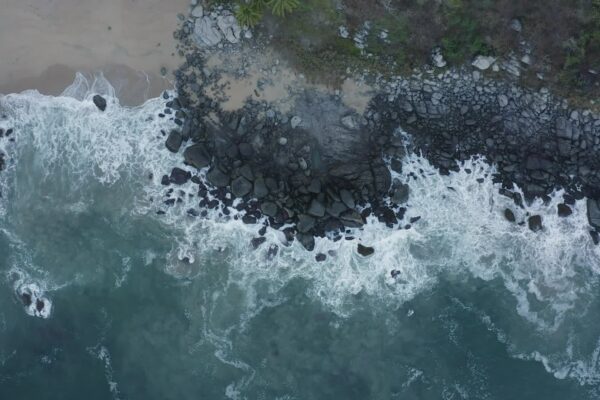
Recommendations for Breakwater Construction Projects (ROM 1.1)
Recommendations for Breakwater Construction Projects (ROM 1.1) completes the regulatory framework of Puertos del Estado for maritime infrastructures that protect land areas against marine dynamics (i.e. wave oscillations). It is a revision and expansion of the ROM 0.0-01 and ROM 1.0-09. The methodology applied in the ROM 1.1 is described in the ROM 0.0-01. With all of its specificities, it reinforces and is the driving force behind the conservation, repair, readaptation and dismantling of port and maritime works. It also points to the need for experimental studies to verify Construction and Investment Projects (of whatever type) and to map out new basic research lines that will help to revise current recommendations and create new ones. The international prestige of the ROM program is an additional motivation to attain these objectives.
Multi-criteria analysis for Physical and bIotic Risk Assessment in EStuaries (PIRATES)
The main aim of this innovative proposal is to provide optimal answers, with the associated uncertainty and risk, to specific management problems in the Guadalquivir estuary (SW Spain). The answers comply with legal, environmental, and socio-economic restrictions. Single- or multi-variable time-series of physical and biogeochemical variables are simulated at tidal, event, seasonal, and multi-annual time scales. The multi-criteria stochastic analysis allows analyzing, for example, different strategies of dredging, regulation of flow rates, drying and flooding of tidal channels and mitigation of the effects of climate change. This multi-criteria approach to estuarine management is, today, an urgent task, given the environmental status of many world estuaries. This is precisely the social challenge facing the PIRATES project.
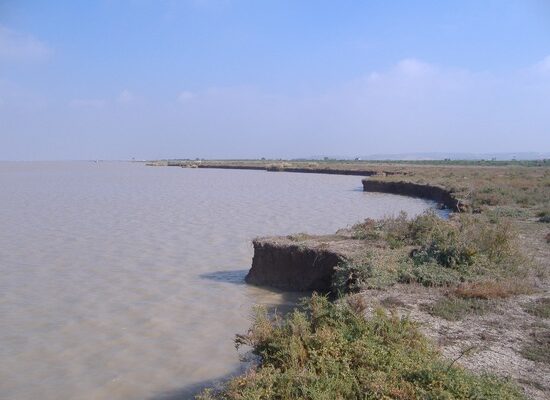
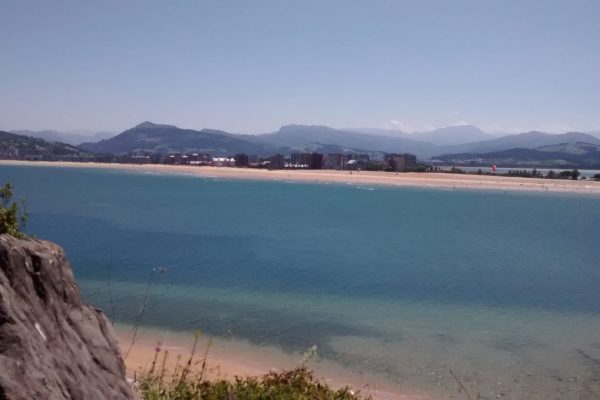
Advancing QUAlity of CLimate services for European Water (AQUACLEW)
The evidence of climate change has increased the demand of data and favoured the creation of climate services that provide projections at different time and space scales. In this project we propose to use innovative research techniques and integrated co-developmment with users to advance the quality and usability of several climate services.
This work aims to have a better understanding of climate change impacts and improve the adaptation capability at fluvial, coastal and transition zones in mediterranean environments that have been altered by human activities.
Biotic and abiotic sensitivity to climate change of peninsular estuaries (SENSES)
Estuaries are highly productive transition areas linking land, freshwater, and marine habitats and then, they also are a major focus of concern regarding the impacts of climate change.
This project aims to study the physical and biotic sensibility of the estuaries of the Iberian Peninsula against global change. It offers efficient perspectives of management and mitigation of impacts on hydrodynamics and biotic of estuaries at horizon 2080.
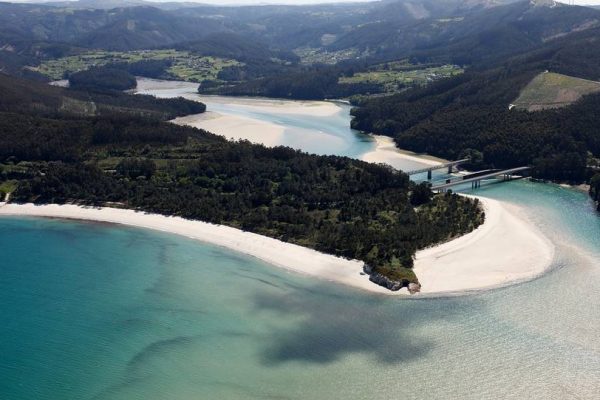
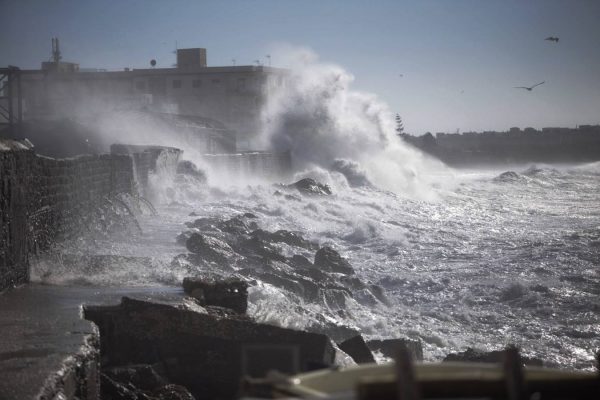
Coastal protection of urban fronts against global warming (PROTOCOL)
One of the main challenges ahead for world’s society is the management of climate change and the subsequent sea level rise (SLR). The coastline gathers one of the most intensely exploited areas settled by humans: half the world’s population lives within 60 km from the shoreline. The effects caused by SLR will affect millions of people, as well as infrastructures, industries, farming settlements, tourist resorts and urban developments.
This project aims to provide recommendations to minimize the impact of the sea level rise on coastal urban fronts. Three case studies have been selected in Spain, Mexico and Portugal.
Integrated verification of the hydrodynamical and structural behavior of a breakwater and its implications on the investment project (VIVALDI)
This project takes an ambitious step forward in the current State of the Art and technological development, by means of a new methodology for assessing the joint probability of failure of the main modes of failure attached to the ultimate and serviceability limit states in any type of breakwater.
The methodology accounts for the simultaneity and compatibility of agents and actions, and their impact in the attainment and principal failure modes as well as their mutual dependence, their space-time evolution considering different time scales of the external agents and their actions during the construction, service life, maintenance, repair and dismantlement. The conceptual part of the project will be developed under a combination of experimental and numerical frameworks, once the principal failure modes have been mapped and their possible evolving connections have been drawn as failure trees. The conceptual model will consider as starting hypothesis the recent works of the research team.
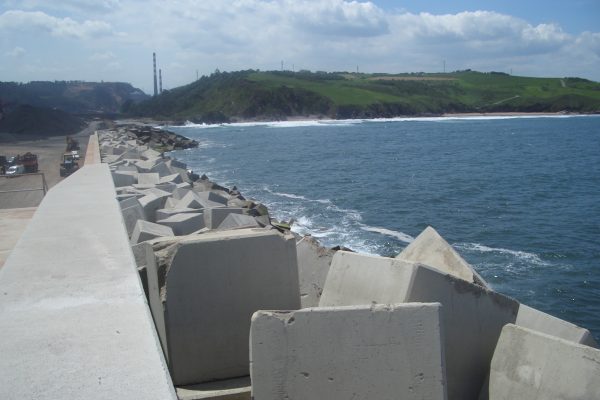
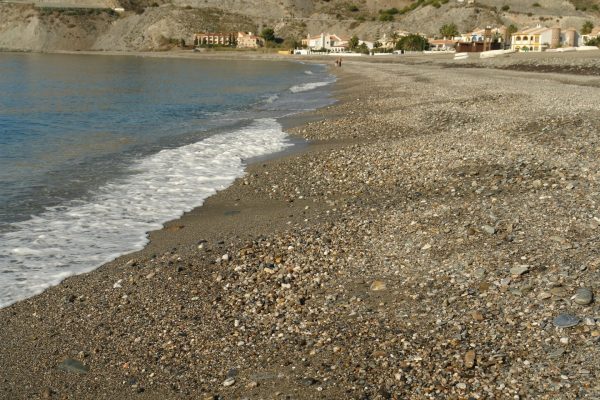
Morphodynamics of heterogeneous beaches in the Andalusian littoral of the Alborán Sea (MORPHAL)
This project studied, described, characterized and modeled the morphodynamics of the heterogeneous beaches located in the andalusian littoral of the Alborán sea. In the analysis we included the different forcing agents (waves, wind and sea levels), their simulation with different temporal scales and their propagation to the coast (surf zone), the interaction between the hydrodynamics and the heterogeneous beaches, including both the effect of the waves and the swash processes in the beach front, and their effects on the sediment transport, and the evolution of the beach profile reproducing the formation of bars, steps and berms and their evolution depending on the forcing and the different temporal scales (forcing-response).
Integral method to diagnose and forecast the consequences of human actions in the Guadalquivir estuary
With a view to recovering the ecosystem-services, and balancing the socio-economic and environmental demands of regional stakeholders, an exhaustive research programme was initiated in the summer of 2007 in the Guadalquivir River Estuary. This study, carried out in close collaboration with the Institute of Marine Sciences of Andalucia, included detailed field studies combined with hierarchical monitoring and modelling of many aspects of the Guadalquivir estuary ecosystem (namely, morphology, sedimentology, hydrology, hydrodynamics, biogeochemistry and biodiversity). High resolution measurements were needed to resolve the spatial and temporal scales of variability in this extremely dynamic estuarine system. This study demonstrated that the application of robust and cost efficient technology to estuarine monitoring can quickly generate the scientific foundations necessary to meet societal and legal demands, and can provide a suitable tool to quickly assess the cost-effectiveness of remedial solutions in the environment.
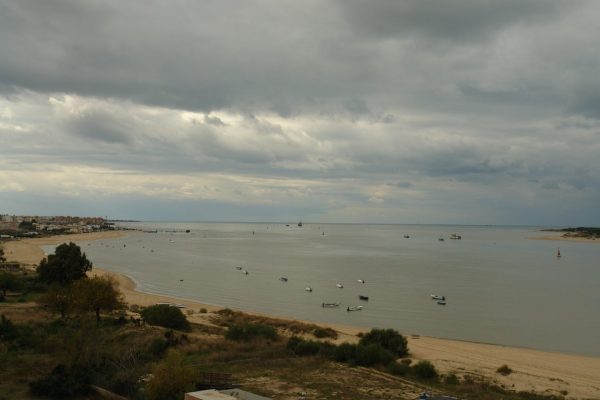
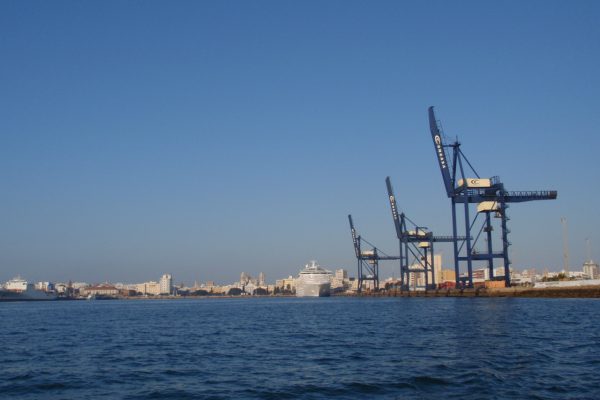
Biogeochemical flows dynamics in the Bay of Cádiz. Field measurements and numerical modeling
Bays are widespread coastal features and unique natural environments that are becoming more important in modern society due to their strategic locations and ecological relevance. The Cádiz Bay (SW Spain) provides an interesting example of a heavily altered bay, with historical records indicating that the first human settlements took place over 3.000 years ago. Recently, the Bay has experienced dramatically rapid and relevant changes as a result of human activities: a new bridge was completed in 2015 and a new container terminal has been under construction at the Port of Cádiz since 2012.
Thus, different field surveys have been carried out before, during and after the construction to assess the dynamic of the bay and which effects are caused by the future interventions. To increase the understanding of the dynamic of the bay, two different numerical models have been implemented to predict the hydrodynamic and morphodynamic behavior.
Unified design method for design and verification of breakwaters (UNIDIA)
A unified design method for the calculation of the wave-breakwater (energy balance) interaction behavior considering the main breakwater typologies was developed within this project. Based on data obtained from experimental and numerical tests, the values of the reflection (modulus and phase), transmission and dissipation coefficients of the wave were obtained. It is remarkable the progress achieved in the description of the variation of the reflection, transmission and dissipation coefficients through the sigmoid function, since it was proven that this function allows the definition of the behavior of the main types of breakwaters.
A support software was developed in order to evaluate the behavior of breakwaters. This tool allows engineers to design a breakwater in a simple and fast way according to the requirements of the project.
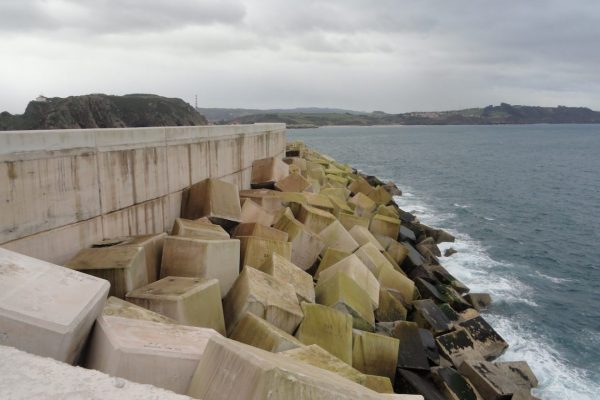
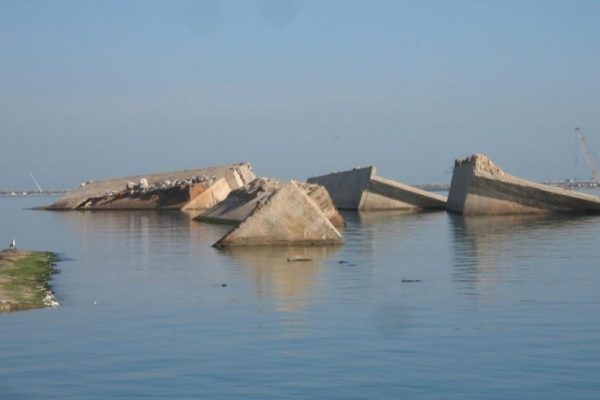
Improvements on the stability of breakwaters over cohesive soils (AREDIS)
The main objective of this project was to develop techniques in order to deal with breakwater design over soft soils. Physical model tests were carried out, allowing the analysis of the interaction between waves, breakwater and soil, with special attention to the processes of liquefaction. Practical solutions to the current problems of designing breakwaters on muddy or cohesive soils were studied, proposing concrete solutions focused on the foundation and the settlement of the structures. A series of recommendations were proposed for their use in applied engineering.
Reliability of port structures
This project was based on an exhaustive physical testing plan, measuring pressures, water levels, discharges and image and video. Additionally, an in-situ measurements campaign on a real breakwater in Gijón Harbour was carried out.
The main contributions of the project were: (1) proposal of a methodology for quantification of scale effects on physical models; (2) accurate definition of the energy balance in front of a breakwater considering wave-structure interaction; (3) design of a new type of armor unit which allows for a better stability of the mound; (4) development of a management model for the optimization of the construction processes; (5) analysis of failures of port cranes under wind forces.
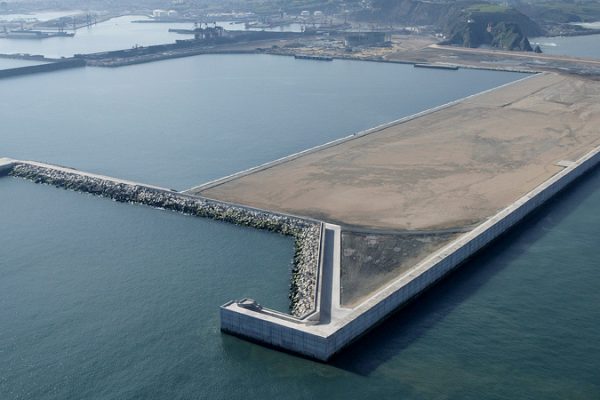
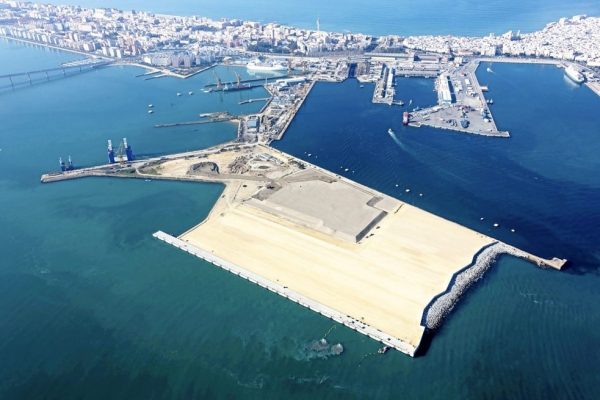
Technological development of maximum stability rubble mound breakwaters
The main objective of the project was to obtain a new typology of breakwater with maximum stability against waves, in order to optimize the design and construction of ports, allowing them to be located in areas subjected to strong waves, and avoiding damages under extreme and exceptional work conditions. Deriving from the results of this project, a patent about the design of a maximum stability breakwater was developed (ES 2 288 336 A1).
Integral study of the environmental effects of wind farms on earth
The project dealt with the study of the environmental impacts caused by wind farms on earth. The mains results were: (1) analysis of the modification of the wind field due to the presence of an isolated wind turbine or a wind farm; (2) study of the death rate of birds and bats, including the creation of a database with the results; (3) study of the modification of climate, hydrology and local flora; (4) landscape modification, with the development of a software to evaluate visual impacts. The project was concluded with the creation of a series of recommendations which have been transferred to public organisms and companies.
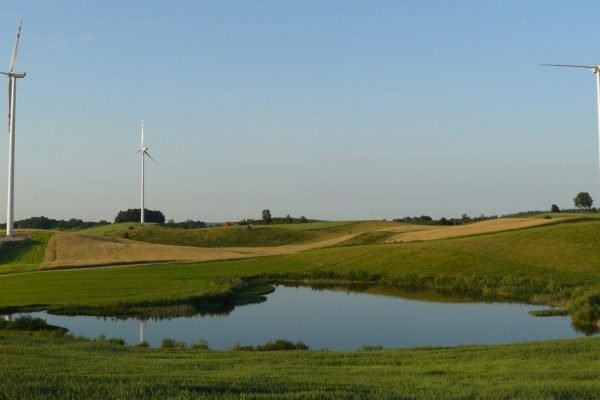
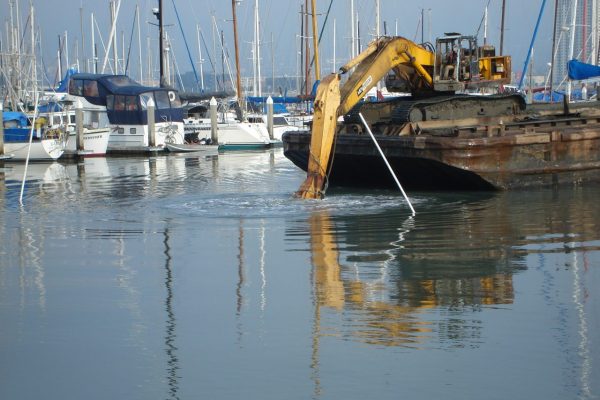
Dredging in the Andalusian port system: management and decision-making methodology (DRAGAPORT)
Most of the Andalusian ports, both in the western and eastern part of the region, are submitted to recurring dredging works. Dredging is a necessity in harbors like Punta Umbría (Huelva), Carboneras (Almería), Chipiona (Cádiz) or Estepona (Málaga) in order to achieve the capability for which they were designed. In other cases, dredging works aim to regenerate beaches.
The main objetive of this Project was to develop an integral management and decisión-making methodology for the planning of dredging works in Andalusian Ports including (1) an exhaustive analysis of the current situation and behavoir; (2) prediction of future scenarios on a short and long term basis and (3) technical and environmental optimization including total cost analysis.
